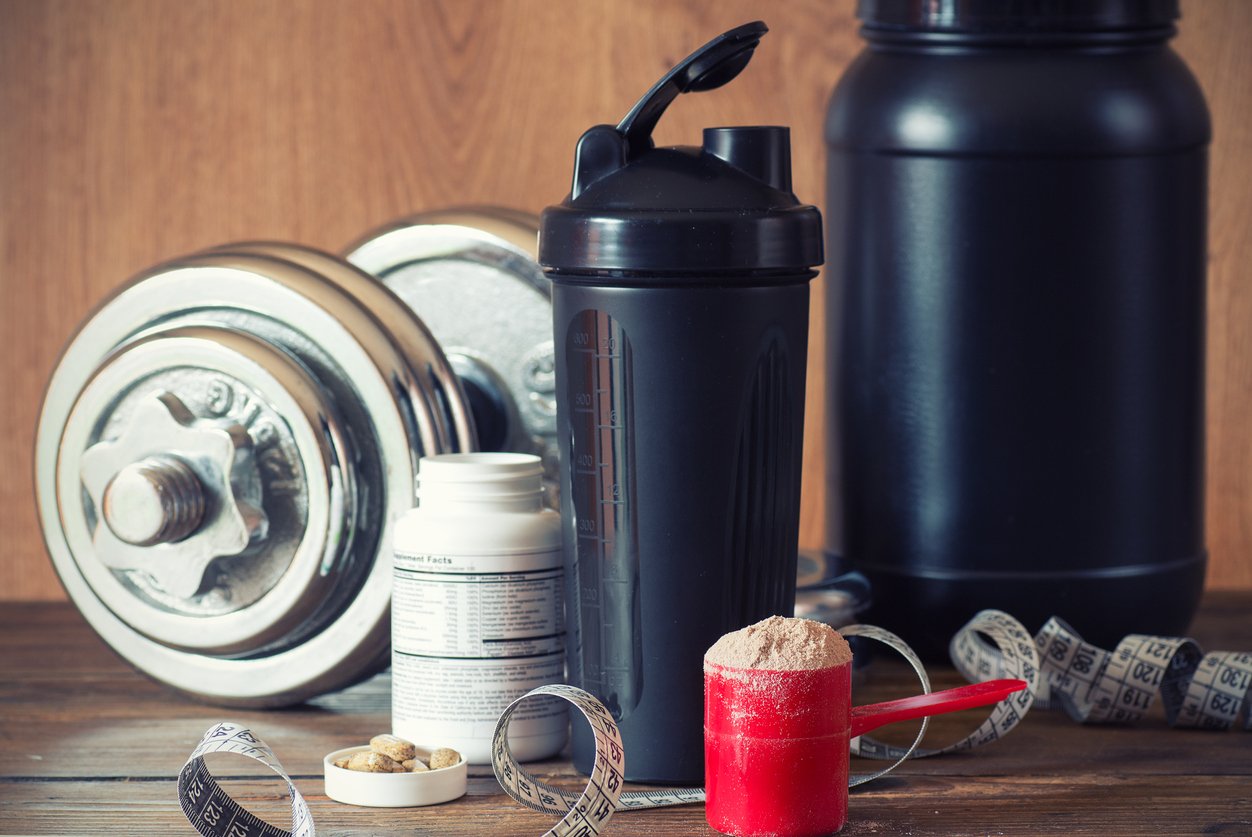Written by Matt Frazier. A version of this article was originally published on nomeatathlete.com
Over the years, we’ve talked a lot about protein: How much you need, how to get it from food, and whether or not you should supplement.
And there’s no one-size-fits-all answer to that last question…
Although I’ve managed to get plenty of protein from whole foods for the past few years, I’ve always acknowledged that for certain people — people who want to add muscle, try to hit macronutrient levels, or just want some peace of mind — supplementing makes more sense.
But if you take protein powder yourself, there’s one question you should most definitely know the answer to:
What’s in your protein powder?
I started looking more closely at protein powders a few months ago, for my kids’ sake. They’re both young plant-based athletes, and — call it parental paranoia if you want — I find myself worrying about their picky eating habits, specifically that most of the foods they love (fresh fruits and vegetables, especially in smoothies) aren’t necessarily dense in protein or, more generally, in total calories.
But when I started looking at the ingredient lists of the common plant-based powders, I was surprised and disappointed. Unfamiliar and artificial ingredients, plus sweeteners (even natural ones) that I knew they wouldn’t like the taste of in their smoothies.
So I did some more digging…
And it got worse. Waaay worse.
Today, I want to share a bit about what I found, in hopes that it helps you to make more informed decisions when choosing a protein powder, if you choose to use them.
And I’ll start with the one that scares me the most…
1. Heavy Metals and Other Carcinogens
Now, I know what you’re thinking.
Heavy metals and chemicals in my protein powder? Nah. No way. I get the good stuff. And it comes from plants.
Think again. Last year, the Clean Label Project™ completed a study examining 134 plant-based and animal-based protein powder products from 52 different brands. They screened for over 130 toxins, including heavy metals, BPA, pesticides, and other contaminants with ties to health problems.
And you know what they found? (You might want to sit down for this one.)
Many of the most popular plant-based protein powders were ranked the worst for their high levels of contaminants like heavy metals. In fact, plant-based protein powders ranked lower than animal-based protein powders on average.
So how does that nasty stuff get into your powder?
According to Clean Label Project, “Contaminants are the result of sourcing and production practices. Contaminants can be found in soils because of pesticides and mining run-off (ex. heavy metals) and can be absorbed into plants just like nutrients. They can also be the result of the manufacturing process (ex. BPA/BPS is using the lining of cans and containers and leach into the protein powder.)”
Let’s take a closer look at some of the most common heavy metals and chemicals to see what the study actually found:
BPA (bisphenol A)
By now you’ve probably heard of BPA, but most people don’t actually know what it is. BPA, or bisphenol A, is a chemical used in a lot of commercial product packaging as a way to strengthen the plastic.
High amounts of BPA, however, are known to cause cancerous tumors, birth defects, and other mental and physical health issues.
A few years ago, BPA garnered a lot of attention when it was discovered to leach from plastic into drinks, like water. Since then, many popular water bottles have gone BPA-free, but it’s still commonly used in many food containers, including some plastic containers that store protein powder, or even the plastic measuring scoop often included in the tub.
The Clean Label Project study found that 55% of protein powders tested had high levels of BPA. And one had over 25 times the allowed regulatory limit in just one serving.
Lead
According to the study, nearly 70% of plant-based protein powders also contained measurable amounts of lead. The potential mental and physical health problems associated with lead are well documented, so why is it showing up in these protein powders?
The primary problem seems to be where the ingredients are sourced from. Lead in the ground seeps into the growing food before harvesting and stays there as it’s turned into your powder.
Arsenic
Arsenic is a naturally occurring chemical often found in water, food, and soil.
This is a particular problem with rice-based products, which is grown in water-flooded conditions. And arsenic in the soil finds its way into the roots of rice crops and is eventually stored in the grains.
Arsenic, of course, is also known to cause a number of health problems including cancer.
So why is it in protein powder? Primarily because of poorly sourced rice protein isolate.
Cadmium
According to the same Clean Label Project study, 74% of protein powders contained measurable amounts of cadmium.
Cadmium is another natural toxic element often found in rocks and soil, and because it does not corrode easily, it’s often used in batteries. That’s right, batteries.
And you guessed it, cadmium also has links to cancer.
But what if my powder is organic?
That was one of my first questions as well. But organic, although good for other reasons, is no help when it comes to heavy metals. Organic protein powders had on average twice the amount of heavy metals as non-organic options. So if a brand doesn’t disclose heavy metal information to you, you’re left wondering.
2. Sweeteners and Flavorings
These days, sweeteners are added to just about every processed food, so it should come as no surprise that they’re also often added to protein powder.
But here’s the thing.
Sweeteners are totally unnecessary. Same goes with flavors (natural or not) like vanilla. The only reason companies often adds the sweeteners and flavors is to try and mask the taste.
In turn, however, they’re adding unnatural ingredients that not only taste fake, but are potentially harmful.
Take a look at common artificial sweeteners like acesulfame potassium, sucralose, or splenda, for example. These sweeteners with their potent taste not only train the brain to crave sweet foods, but are known to increase the risk of cardiovascular disease and obesity.
How about natural sweeteners like stevia or monk fruit, you ask?
In my opinion, if it isn’t serving me (or my kids), I don’t want to add it to my smoothie, where the additional sweetness only makes things taste less natural. I want my smoothie to taste like the fruit that’s in it, and no sweeter.
3. Fillers, Preservatives, and Gums
While the contaminants scare me most, the biggest shocker I came across in my research on protein powder was what I learned about fillers.
First, there’s a reason you don’t see percentages next to protein powder ingredients on labels.
Many brands, like the one I used to take, boast a “blend of pea, rice, hemp, and chia” (for example) to create the appearance of a complete amino acid profile. But if they’re not telling you the amounts of each in the product, then nothing prevents them from using 95% or even 99% of the cheapest powder, and only blending the others to make up the remaining 5% or less.
There’s nothing to tell you it’s pretty much just one type of protein. And that the amino acid profile is incomplete.
In an industry so unregulated as supplements are, it’s not hard to imagine that’s what they do.
Besides cheap proteins, dextrin (a carbohydrate from starch) and maltodextrin (produced from corn, rice, potato starch, or wheat) are common fillers added to protein powder to bulk it up.
Then there are gums, like xanthan gum, which is derived from corn and soy and often used as a thickener in protein power. These gums are totally unnecessary and some people can find them hard to tolerate.
Lax labeling requirements mean you can’t really feel confident about what’s in your powder. Sure, you might have an ordered ingredient list, but when you don’t know how much of each ingredient is included, you have no idea if your powder is really what it claims to be.
Where This Leaves Us
When it comes to protein, the best place to get it is from food. And for many people, that’s not hard to accomplish. If you eat a wholesome diet based around real food, then in the vast majority of cases that will leave with more than enough. (And keep in mind, the average American gets about twice as much protein as they need. And in the industrialized world, excess protein consumption is causing vastly more disease than inadequate protein.)
But if you’re over 65 or highly active, and vegetarian or vegan, then you may want to consider supplementing with protein powder, especially if you don’t include soy, gluten, or abundant legumes in your diet.
If you choose to use a protein supplement, the best bet is to look for one that is fully compliant with California’s super stringent Prop 65 requirements. That means any heavy metals and other carcinogens present are less than 0.1% of the “No Observable Effects Level” set by California. And remember, you are looking for brands that explicitly state that they comply with California’s proposition 65, not just in California, but everywhere else, too!
And make sure to read the label to insure that the protein you’re getting is organic and is free of any undesirable sweeteners, flavorings, chemicals, preservatives, fillers and gums that you don’t want. Bonus points if it uses a range of protein sources, tells you how much of each is included, and has a diverse amino acid profile.
A protein supplement isn’t for everybody. In fact, it isn’t even for most people. But if you’re someone who might benefit from it, then the way I see it, you deserve to know the facts so you aren’t spending an arm and a leg (Newsflash: most protein powders aren’t exactly cheap!) to buy a product that might wind up doing more harm than good.
Editor’s Note
The author of this article, No Meat Athlete founder Matt Frazier, was so frustrated by what the learned when he researched the protein powder options on the market, that he decided to take action. He developed a plant-based, organic, non-GMO protein powder that is low in heavy metals, and that he could feel good about giving to his own kids. And now he’s sharing it with the rest of us, too. If you want to find out more, click here. (If you make a purchase from this link, you’ll get a special Food Revolution Network discount, and Matt will also make a contribution to support the work of Food Revolution Network. Thank you!)
Tell us in the comments:
- Do you use protein powder?
- What do you like or not like in a protein powder?
- Are there any brands of protein powder you won’t ever use? If so, why?
Featured Image: iStock.com/iprogressman




